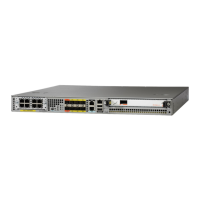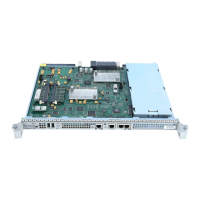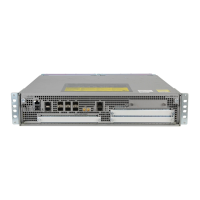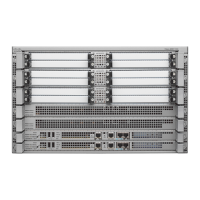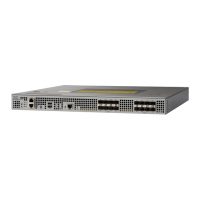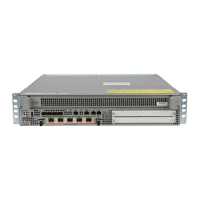the BITS interface, and sends it to an SSU through the BITS port. The SSU cleans the clock and sends
it back to the BITS interface. This clock is used as the Tx clock for the SyncE ports.
•
System to External: The system clock is used as the Tx clock for an external interface. By default, the
system clock is not transmitted on an external interface.
Squelching
Squelching is a process in which, an alarm indication signal (AIS) is sent to the Tx interfaces whenever the
clock source goes down. The squelching functionality is implemented in two scenarios:
•
Line to external: If the line source goes down, an AIS is transmitted on the external interface to the SSU.
•
System to external: If the router loses all the clock sources, an AIS is transmitted on the external interface
to the SSU.
Squelching is performed only on an external device such as an SSU or a Primary Reference Clock (PRC).
SSM and ESMC
Network clocking uses these mechanisms to exchange the quality level of the clock between the network
elements:
•
Synchronization Status Message
•
Ethernet Synchronization Messaging Channel
Synchronization Status Message
Network elements use Synchronization Status Messages (SSM) to inform the neighboring elements about the
Quality Level (QL) of the clock. Non-Ethernet interfaces, such as optical interfaces and SONET/T1/E1 SPA
framers, use SSM. The key benefits of the SSM are:
•
Prevents timing loops.
•
Provides quick recovery when a part of the network fails.
•
Ensures that a node derives timing from the most reliable clock source.
Ethernet Synchronization Messaging Channel
In order to maintain a logical communication channel in synchronous network connections, Ethernet relies
on a channel called Ethernet Synchronization Messaging Channel (ESMC) based on IEEE 802.3
Organization-Specific Slow Protocol standards. ESMC relays the SSM code that represents the quality level
of the Ethernet Equipment Clock (EEC) in a physical layer.
The ESMC packets are received only for those ports configured as clock sources, and transmitted on all the
SyncE interfaces in the system. These packets are then processed by the clock selection algorithm on RP. and
are used to select the best clock. The Tx frame is generated based on the QL value of the selected clock source,
and sent to all the enabled SyncE ports.
Cisco ASR 1000 Series Aggregation Services Routers SIP and SPA Software Configuration Guide, Cisco IOS
XE Everest 16.5
108 OL-14127-17
Overview of the Ethernet SPAs
SSM and ESMC
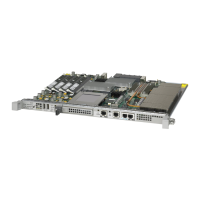
